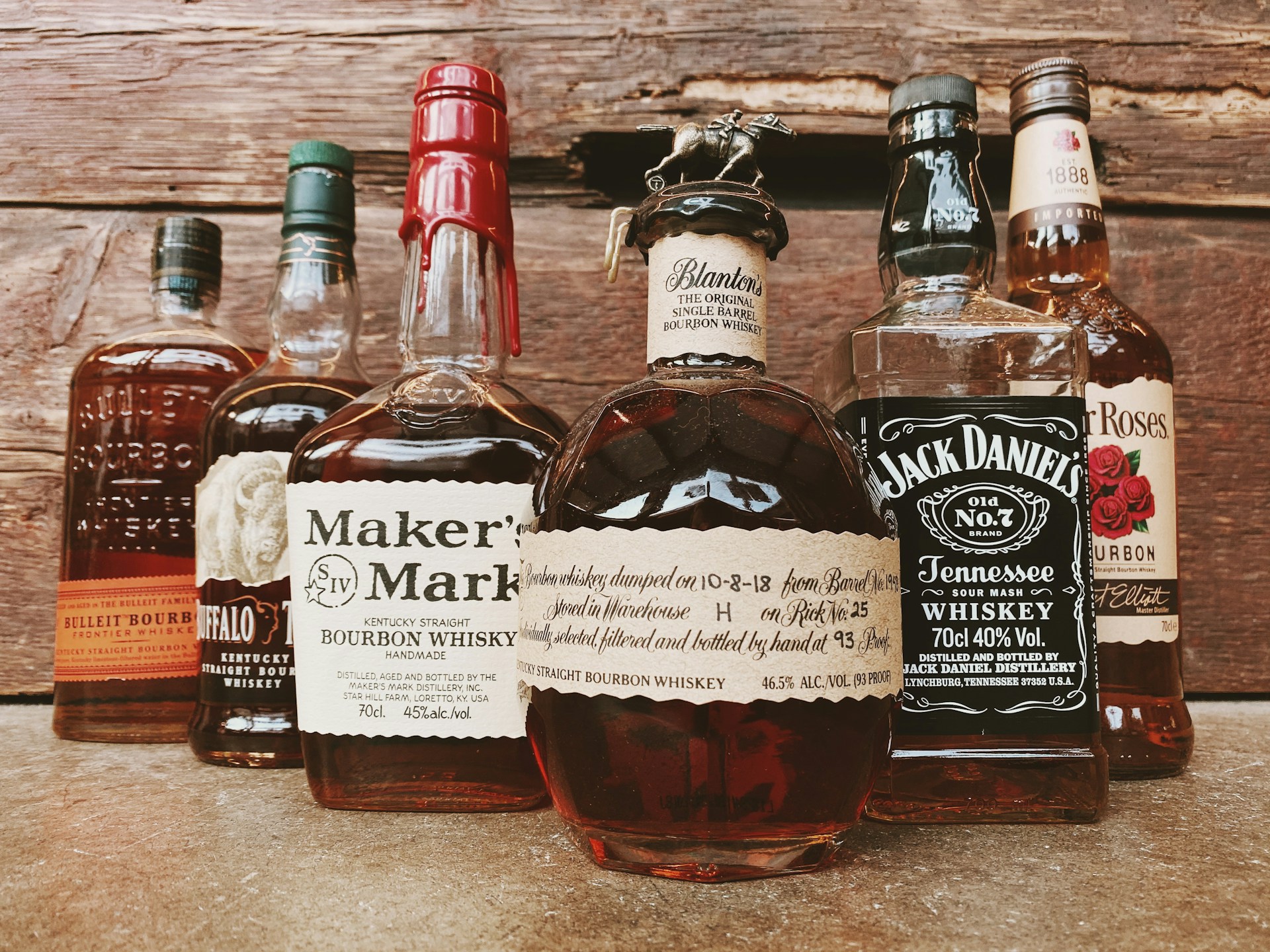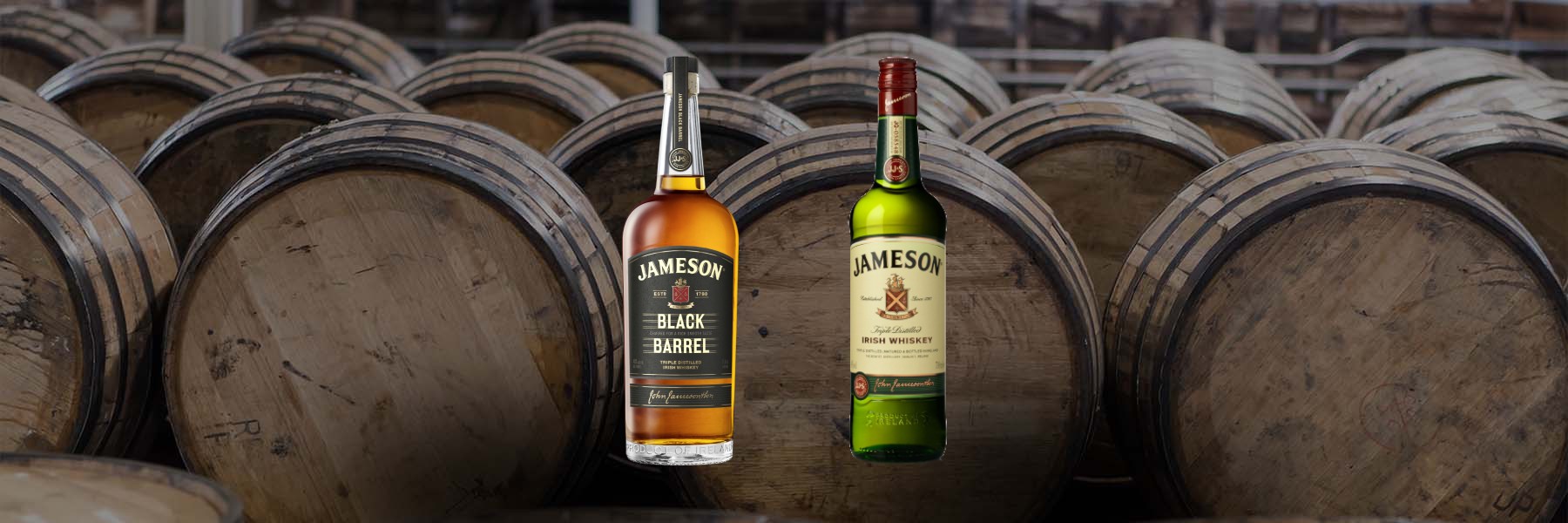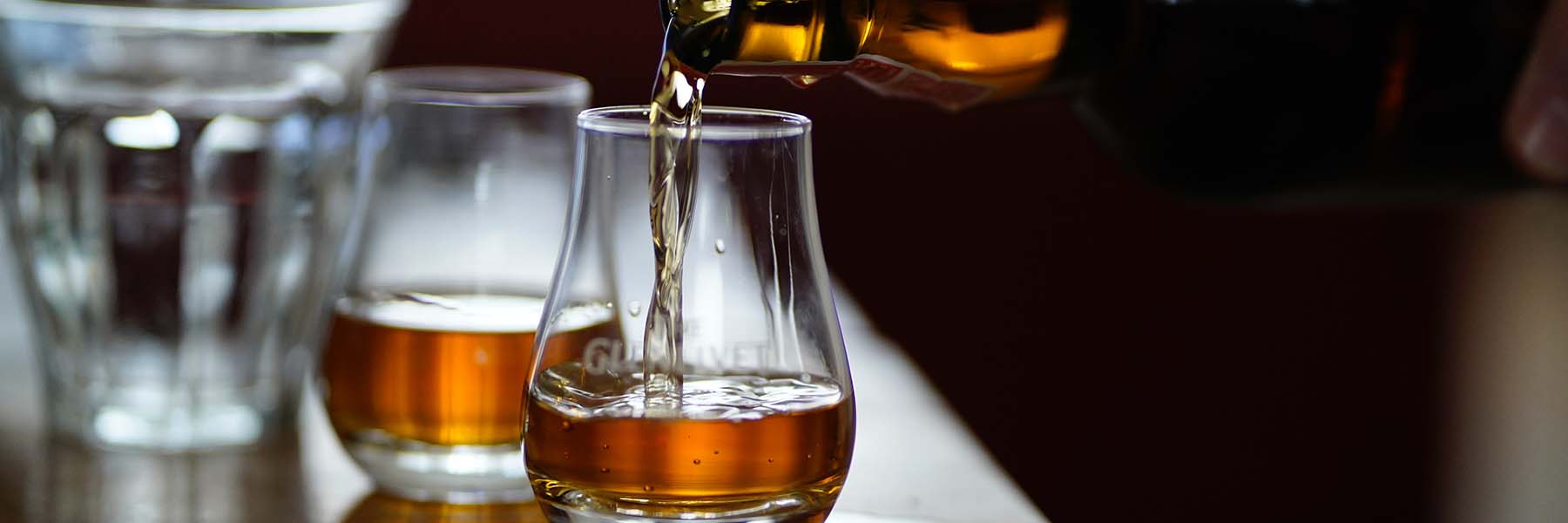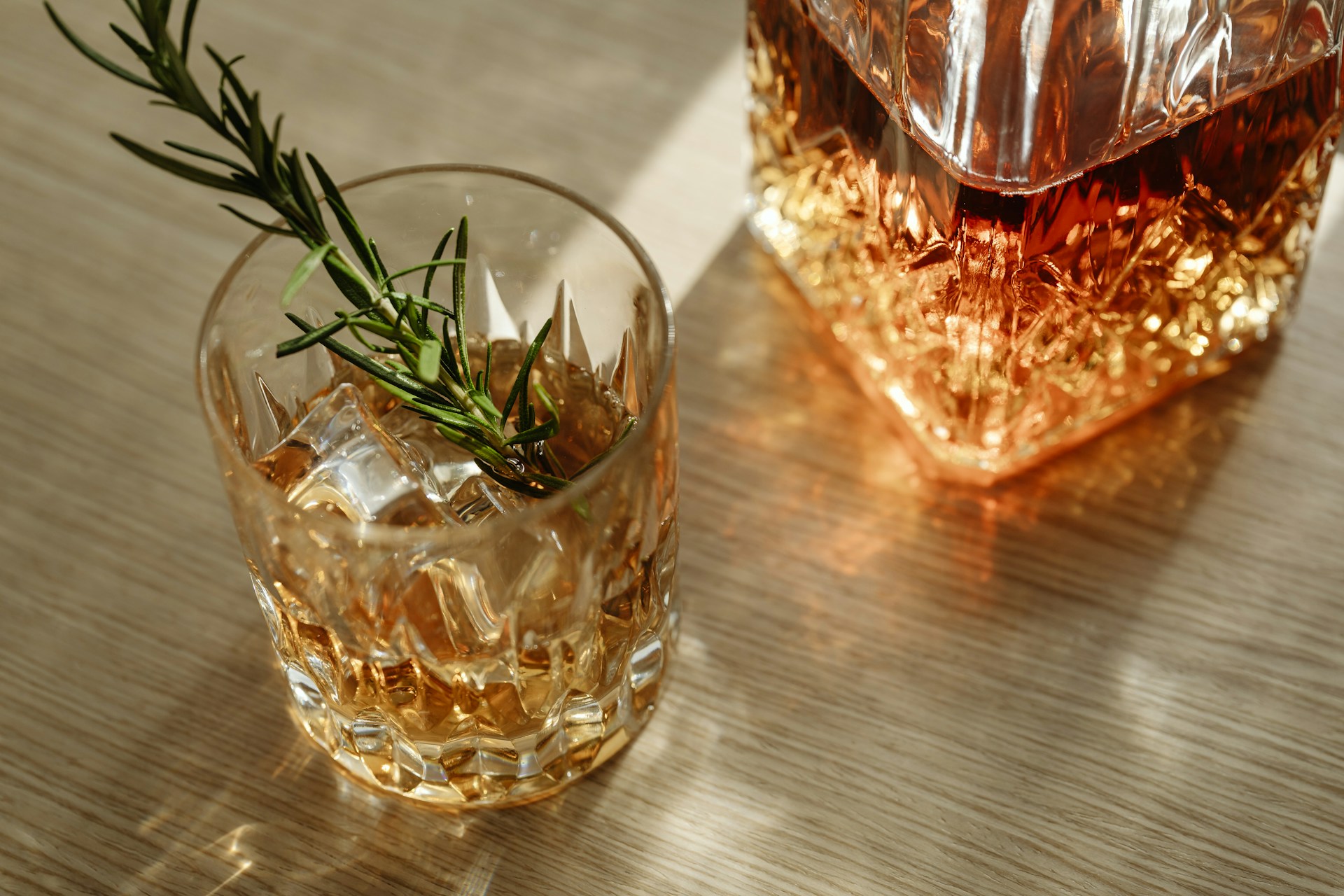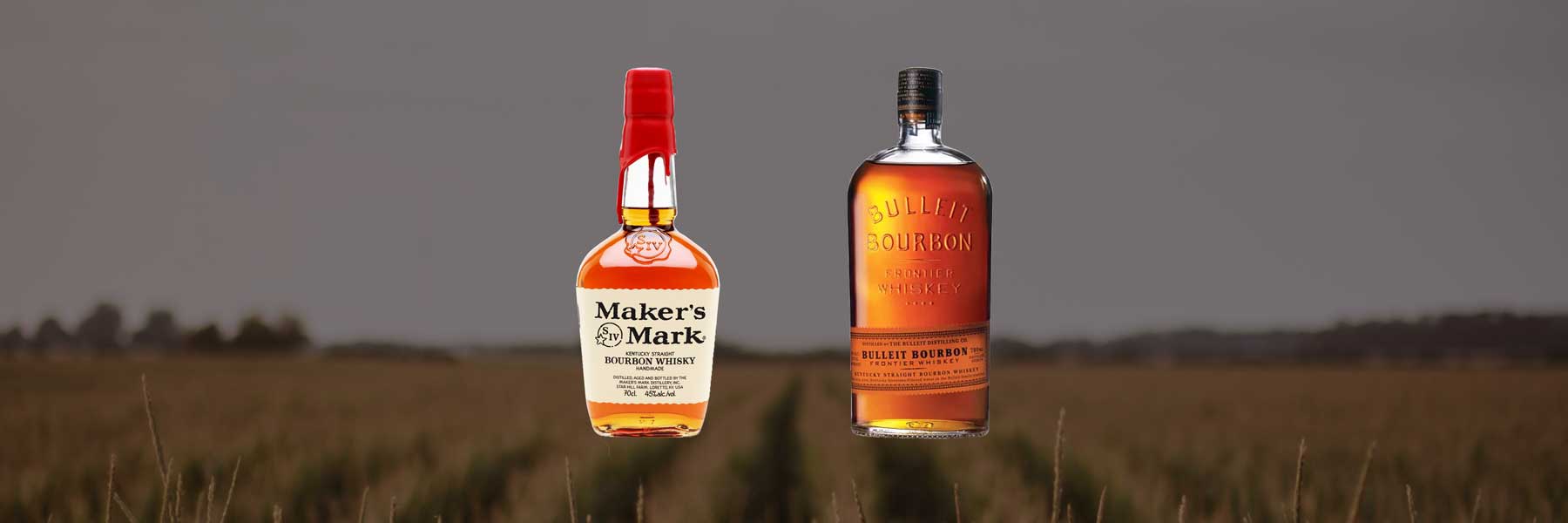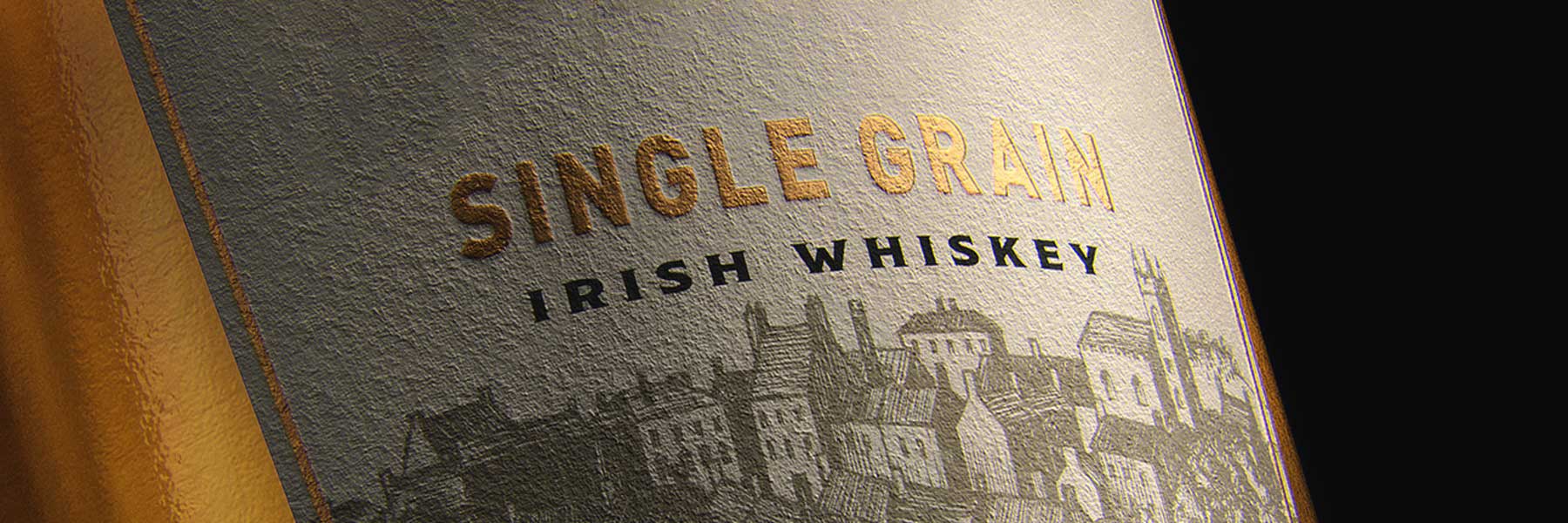Bourbon vs Whiskey – What’s the Difference?
All bourbon is whiskey, but not all whiskey is bourbon. Unlike American whiskey, which can use various proportions of cereal grains, bourbon (by law) requires a minimum of 51% corn as the primary grain within its mash bill. It must also be matured in new charred oak barrels for a minimum of 2 years.
To get a better understanding of bourbon vs whiskey, this article outlines their key differences in terms of regulations, ingredients and aging.
Let’s dive in.
What Is Whiskey?
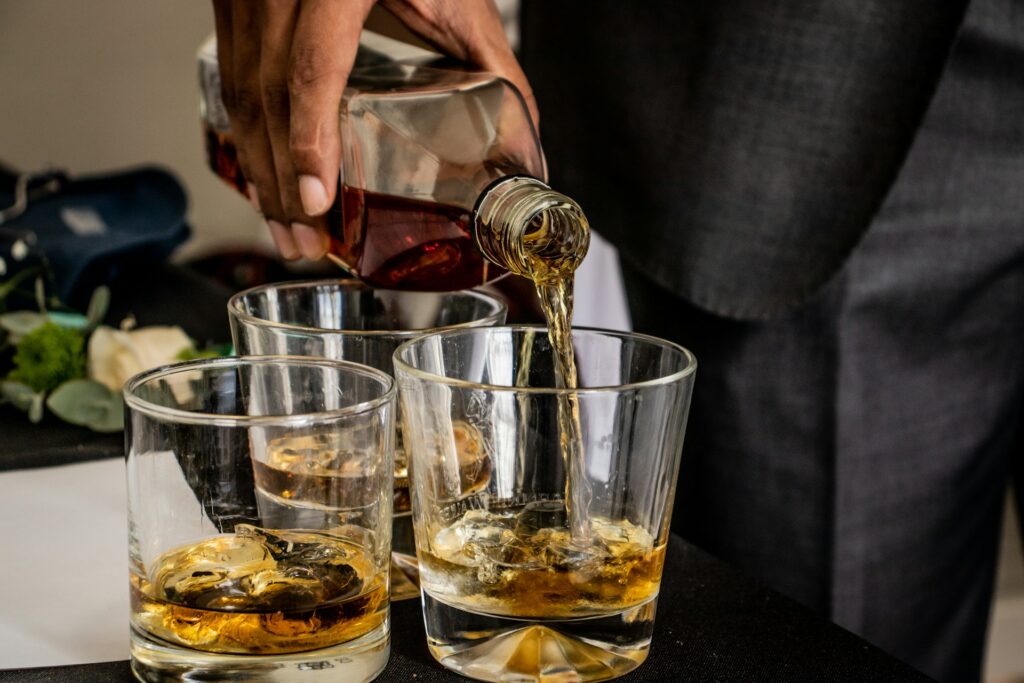
Whiskey is a distilled alcoholic beverage made from fermented grain mash, typically including barley, corn, rye, and wheat. In the United States, whiskey is subject to strict legal definitions and regulations outlined by federal laws.
According to U.S. law, whiskey must be distilled to no more than 190 proof (95% alcohol by volume) and aged in wooden barrels. Additionally, it must not contain any additives other than water, caramel coloring, or flavoring agents that do not alter the whiskey’s character.
American whiskey encompasses various subtypes, each with its own unique characteristics and production methods. These include:
Whiskey is a distilled alcoholic beverage made from fermented grain mash, typically including barley, corn, rye, and wheat. In the United States, whiskey is subject to strict legal definitions and regulations outlined by federal laws.
- Bourbon
- Rye whiskey
- Corn whiskey
- Tennessee whiskey
- Wheat whiskey
- Blended whiskey
- Single malt whiskey
- Single barrel whiskey
- Craft or artisanal whiskey
What Is Bourbon?
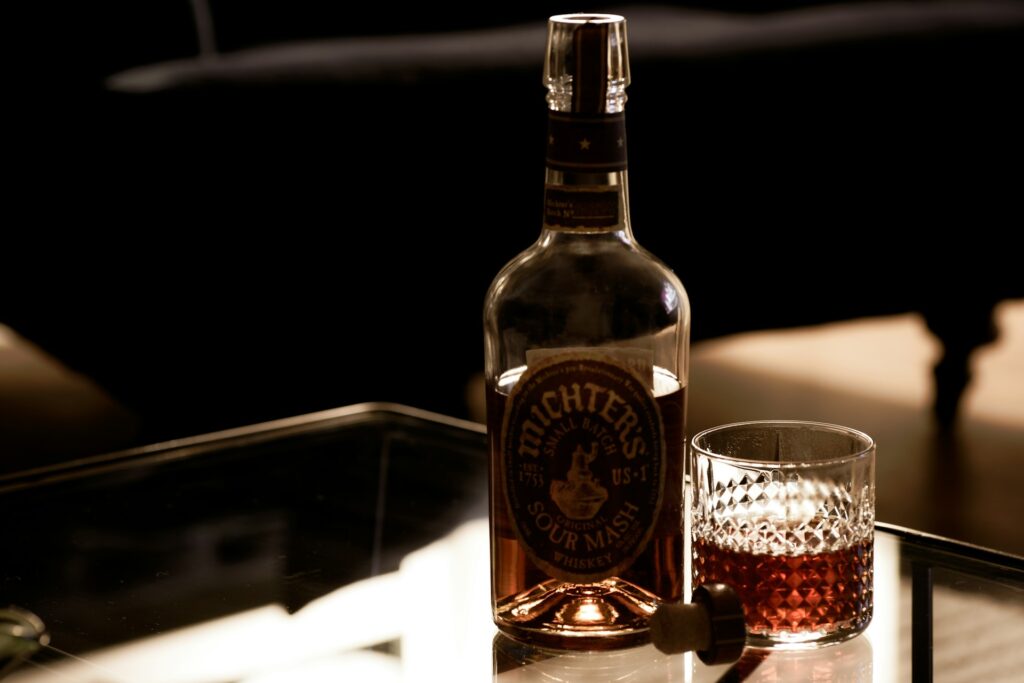
Bourbon is a unique subtype of American whiskey defined by strict legal requirements. By law, bourbon made for U.S. consumption must originate in the United States and be crafted from a mash bill containing at least 51% corn.
Additionally, it must undergo aging in new, charred oak barrels, contributing to its distinctive flavor profile. The distillation process must not exceed 160 proof (80% ABV), and the whiskey must enter the barrel at no more than 125 proof (62.5% ABV).
Finally, bourbon must be bottled at 80 proof or more (40% ABV), ensuring a minimum alcohol content that maintains its integrity and character. These regulations uphold the quality and authenticity of bourbon, making it a cherished spirit both domestically and internationally.
Here are the different subtypes of bourbon.
- Straight bourbon
- Bottled in bond bourbon
- Wheated bourbon
- High rye bourbon
- 100% corn bourbon
- Four-grain bourbon
- Barrell proof bourbon
- Single barrel bourbon
Key Differences Between Bourbon and Whiskey
The key differences between bourbon and whiskey lie in their mash bills, proof/ABV%, and barrel aging. Bourbon must contain at least 51% corn in its mash bill, while whiskey can vary in grain composition. Bourbon typically has a higher proof/ABV% than whiskey, with most bourbons bottled at 80 proof or more, whereas whiskey may have lower alcohol content.
Additionally, bourbon must be aged in new, charred oak barrels for at least two years, imparting specific flavors and characteristics. In contrast, whiskey can be aged in various barrels, allowing for greater versatility in flavor development.
What’s the Difference Between Bourbon and Straight Bourbon?
The primary difference between bourbon and straight bourbon lies in their aging process. While all bourbon must be aged in new, charred oak barrels, straight bourbon must be aged for a minimum of two years. This distinction ensures that straight bourbon has spent significant time maturing in barrels, allowing for more pronounced flavors and complexities to develop. Therefore, while all straight bourbon is bourbon, not all are considered straight bourbon unless it meets the specific aging criteria.
Does Bourbon Have to Be Made in Kentucky?
Bourbon does not have to be made in Kentucky; it can be produced anywhere in the United States as long as it meets the legal requirements set by the U.S. government.
However, Kentucky has historically been associated with bourbon production due to its favorable environmental conditions and limestone-filtered water, which is ideal for distilling and aging bourbon. The state’s long-standing tradition of bourbon-making dates back centuries, with Kentucky playing a pivotal role in shaping bourbon’s identity.
Kentucky is home to over 70 distilleries, making it the epicenter of bourbon production in the United States. While Kentucky remains the primary hub for bourbon, other states such as Tennessee, Indiana, and Texas contribute to the bourbon landscape, each offering unique expressions and styles of the beloved spirit.
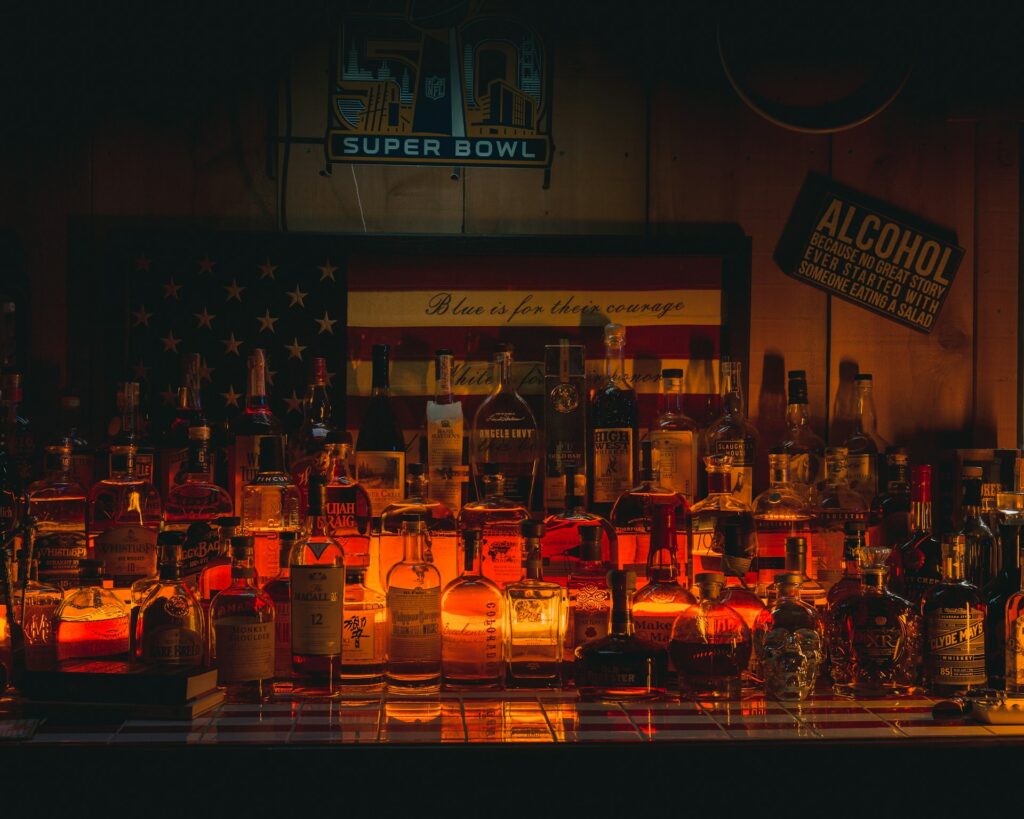
Popular Kentucky Bourbon Distilleries
- Bardstown Bourbon Company – Bardstown, Kentucky
- Buffalo Trace Distillery – Frankfort, Kentucky
- Four Roses Distillery – Lawrenceburg, Kentucky
- Heaven Hill Distillery – Bardstown, Kentucky
- Jim Beam Distillery – Clermont, Kentucky
- Maker’s Mark Distillery – Loretto, Kentucky
- Wild Turkey Distillery – Lawrenceburg, Kentucky
- Woodford Reserve Distillery – Versailles, Kentucky
FAQs
1. Can you drink bourbon straight?
Yes, bourbon can certainly be enjoyed straight, meaning it’s sipped neat without any water, ice or mixers. This way, you can enjoy the fullest depth of aromas and flavors from the barrel-aged spirit.
2. Is bourbon easier to drink than whiskey?
Whether bourbon is easier to drink than whiskey depends on personal preference and tolerance to alcohol. Some find bourbon smoother due to its sweeter flavor profile which stems from the high proportion of corn, while others may prefer the bolder, spicier taste of rye-heavy whiskeys.
3. Is bourbon harder on your liver than beer?
Consuming bourbon, like any alcoholic beverage, can strain the liver if consumed excessively. However, comparing its impact to beer depends on factors like alcohol content and quantity consumed.
4. Is bourbon drank warm or cold?
Bourbon can be enjoyed at various temperatures, depending on personal preference. Some prefer it neat or on the rocks, while others enjoy it in cocktails served over ice or chilled glasses.
5. Is bourbon and rye the same thing?
No, they are not. Bourbon is primarily made from corn and tends to be sweeter, while rye whiskey is made primarily from rye and has a spicier flavor profile.
Summary
- All bourbon is whiskey, but not all whiskey is bourbon.
- Whiskey is made from fermented grains including barley, corn, rye, and wheat.
- Bourbon is a subtype of American whiskey, made from fermented cereal grains with a minimum proportion of 51% corn.
- Bourbon must be aged in charred new oak barrels
- Straight bourbon must be aged for a minimum of two years.
- Approximately 95% of all American bourbon is made in Kentucky
- Bourbon can be made anywhere in the United States


